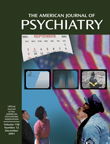No one needs coffee table books, but a lot of us enjoy them. What makes a good coffee table book? Many different things for many different people, I suppose. My preference is usually for some large engaging pictures, some beautiful and some at least a bit surprising, plus some but not too much text, both instructive and entertaining; some but not too much challenge; and a combination of both familiar and unfamiliar things. Photolanguage, a book by a psychoanalyst about looking at photographs, though less opulent than many coffee table books (no color, except on the cover; no full-page photos), will probably strike many readers of this journal as a pretty good coffee table book. It may also serve some students of photography as a pleasant and not too deeply psychoanalytic study of some meanings in photographs. “My premise,” says the author, “is a simple one: there is more going on in most photographs than we usually see.”
Akeret may have taken some inspiration from Ruskin, who, with his looking at art and nature and eloquently and carefully commenting on what he saw, is perhaps coming back into fashion. Ruskin said such things as, “The greatest thing a human soul ever does in this world is to see something, and tell what it saw in a plain way.” Akeret is interested in the uses of photographs in looking and seeing, in life and, on occasion, in psychotherapy. His book is far more about meanings than about aesthetics, and he considers multiple meanings, e.g., meanings conveyed by the photograph’s subject (if the photo is of a person), by the photographer, and by the observer of the photograph. One might, I think, add to this list the publisher or boss of the photographer and the purchaser or user of the photo, since so immensely much photography now is photojournalism and advertising.
Akeret as a guide is pleasantly perceptive, capable of humor, and not too dogmatically sure of himself. “Do not always expect to agree with my interpretations. In fact, if you do, I will not have taught you well.” To my mind, Akeret is an imperfect guide; he sometimes cheats a bit, and I think he does not quite give due weight to cultural and temporal context, but on the whole he is worthwhile and instructive, and he makes useful choices of illustrative photos. His major organizing themes seem to me to be time, power, passion, seduction (loosely defined), and identity. The photos are mostly from the past 10 or 20 years, making cultural context relatively easy for many viewers; few if any are from before World War I. Rather a lot of them are of famous people, e.g., Marcello Mastroianni, Michael Jordan, Joe DiMaggio, Monica Lewinsky, the Clintons, Woody Allen and Soon Yi, Prince Charles and family, Judy Garland, Richard Burton and Elizabeth Taylor, Ernest Hemingway, Richard Nixon, Lyndon Johnson, Janet Reno, Bill Gates, Hitler, Charles DeGaulle, Mao, Frank Sinatra, Gandhi, Martin Luther King, Nelson Mandela, Marlene Dietrich, Princess Diana, Marilyn Monroe, Laurence Olivier, Danny Kaye, Elvis, F.D.R. and family, Arafat, O.J. Simpson, Nadia Boulanger and Leonard Bernstein, John Paul Getty, Mario Cuomo, Marian Anderson, Josephine Baker, Winston Churchill, Eugene O’Neill and family, and Mayor Giuliani and Donna Hanover. Many are of ordinary people. Some are of people in emotional moments, some not. Some are of individuals and families seen in more than one photo, over time.
One of my favorites is of a major tobacco executive testifying at a Congressional inquiry: intense in itself and plausibly showing conflict. Another, much more peaceful, is of two Depression-era children sadly pushing a load of firewood along a country road. Of interest to knowledgeable APA members will be one of the powerful men behind then Attorney General Janet Reno in her photograph.
Photolanguage will help some of us to look better at photographs, at people, and even at our patients. It is a pleasant and instructive book to look at, to read, and to give to friends.

